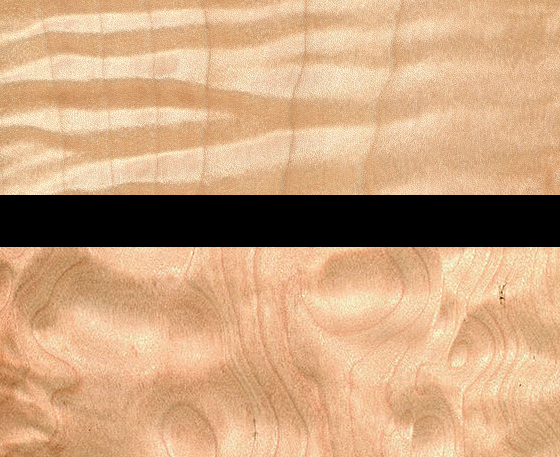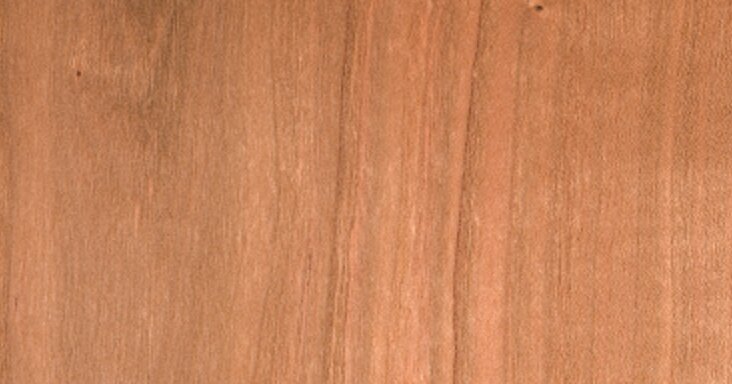Providing information so you can make better choices
When purchasing lumber, I go directly from a local sawmill, so I can cut out as many middle men as possible, and provide the best price to you. I am in the process of setting up my own kiln and have several logs at various stages of the drying process.
Below are a few of woods available from the sawmill. The only “exotic” or imported wood is Sepele, which is in the Mahogany family, but comes in at a better price point than either Honduran Mahogany, or African Mahogany. At the bottom is the entire list of woods commonly found at the saw mill.
Janka Hardness:
The Janka scale is used to determine the relative hardness of particular domestic or exotic wood species. The Janka test measures the amount of force required to embed a 0.444" steel ball into the wood to half of its diameter. Woods with a higher rating are harder than woods with a lower rating.
Heartwood vs. Sapwood
Heartwood is the center section of the tree, usually darker than the sapwood, which is arguably the “living” portion of the tree.
Oak:
White Oak heartwood is a light to medium brown, commonly with an olive cast. Nearly white to light brown sapwood is not always sharply demarcated from the heartwood. Quartersawn sections display prominent ray fleck patterns.
Red Oak sometimes has a slightly reddish hue to the heartwood, however, it more refers to the color of the leaves in fall.
I do not recommend gloss or semi-glass finish unless the open pours are filled.
Janka Hardness:
1220 Red Oak
1335 White Oak
Quartersawn Oak:
With Quartersawn lumber, the log is literally sawn in quarters before planks are cut from it. Then the log section is rotated 90 degrees for each plank.
This provides lumber which is exceptionally stable, meaning, it wont change or move much with humidity changes. An additional wonderful aspect of processing Oak in this manner is the lumber frequently has “rays” contained within the grain, which adds an additional level of beauty.
The manner in which the lumber is sawn does not change the strength or hardness of the wood in any significant amount.
The additional labor involved in producing quartersawn lumber along with the additional waste and unusable wood, lends to the higher cost.
Maple
Unlike most other hardwoods, the sapwood of maple lumber is most commonly used rather than its heartwood. Sapwood color ranges from almost white, to a light golden or reddish brown, while the heartwood is a darker reddish brown. Silver Maple can also be seen with curly or quilted grain patterns.
Janka Hardness:
Soft Maples: 850
Hard Maples: 1,450
Curly and Quilted Maple
Curly and Quilted Maple are not actually a species, rather a description of a figure in the grain—it occurs most often in soft maples, but is also seen in hard maples. It is so called because the ripples in the grain pattern create a three dimensional effect that appears as if the grain has “curled” along the length of the board.
Cherry (Black Cherry, American Cherry)
Heartwood is a light pinkish brown when freshly cut, darkening to a medium reddish brown with time and upon exposure to light. Sapwood is a pale yellowish color.
Cherry darkens with age. To make that darkening happen faster, expose the piece to UV light, or simply take it outside on a day that is right for air drying laundry.
Janka Hardness: 950
Curly and Quilted Cherry
Like curly and quilted maple, the same variations occur in cherry, but not nearly as often. These are rare finds, however, they create some of the most beautiful pieces.
Walnut
With an open grain, Walnut is very similar to oak in look, feel, and texture. I do not recommend a glossy finish unless the open pours are filled.
Heartwood can range from a lighter pale brown to a dark chocolate brown with darker brown streaks. Color can sometimes have a grey, purple, or reddish cast. Sapwood is pale yellow-gray to nearly white. Figured grain patterns such as curl, crotch, and burl are also seen.
Janka Hardness: 1,010
Sapele (Sapelli, Sapeli)
The only exotic lumber to make my preferred woods list so far. My local sawmill introduced me to this wood, and I have to say, its a true pleasure to work with, without higher cost of its Mahogany brethren.
Heartwood is a golden to dark reddish brown. Color tends to darken with age. Besides the common ribbon pattern seen on quartersawn boards, Sapele is also known for a wide variety of other figured grain patterns, such as: pommele, quilted, mottled, wavy, beeswing, and fiddleback.
Janka Hardness: 1,410
Hickory
A great utility wood for making toolboxes and other things that will see a lot of hard use.
Heartwood tends to be light to medium brown, with a reddish hue; sapwood is a paler yellowish brown. Boards with contrasting heartwood and sapwood create a somewhat rustic appearance that’s sometimes marketed as Calico Hickory.
Janka Hardness: 1,500
*Also available at the mill*
Domestic Woods:
Alder
White Ash
Basswood
Beech
Birch
Red Birch
Sap Birch
Butternut
Aromatic Red Cedar
Cherry
Cypress
Hickory
Kentucky Coffee Tree
Soft Maple
Hard Maple
Red Oak
White Oak
Sassafras
Yellow Poplar
Walnut
Birdseye Maple
Curly Birch 4/4 Subject to availability
Curly Hard Maple 4/4 Subject to availability
Curly Soft Maple 4/4 Subject to availability
Curly Cherry 4/4 Subject to availability
Curly Red Oak Subject to availability
Curly Hickory Subject to availability
Red Oak Rift
White Oak Qtr Sawn
White Oak Rift
Exotic Woods:
Benge 4/4
Black Limba 4/4
Bloodwood 4/4
Brazilian Cherry 4/4 5/4 8/4
Bubinga 4/4 8/4
Canary Wood 4/4
European Beech 4/4
Goncalo Alves 4/4
Iroko 4/4 8/4
Lacewood 4/4 8/4
Leopardwood/Brazilian 4/4
African Mahogany 4/4 5/4 8/4 12/4
Genuine Mahogany 4/4 6/4 8/4 12/4 16/4
Sapele 4/4 8/4
Padauk 4/4 8/4
Pau Amarella 4/4
Purple Heart 4/4 8/4
Bolivian Rosewood 4/4
Spanish Cedar 4/4
Teak 4/4 8/4
Wenge 4/4 8/4
Zebrawood 4/4 8/4









